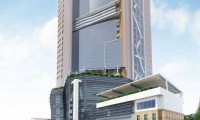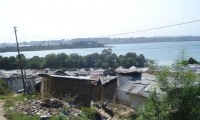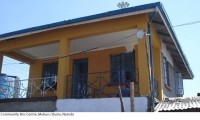A Collaborative Project between Eco-Build Africa (Host) University of Nairobi, Department of Architecture & University of Florida, (USA), funded by the National Science Foundation (NSF, USA).
This was a collaborative project between Eco-Build Africa (Host), University of Nairobi, Department of Architecture & University of Florida, (USA), funded by the National Science Foundation (NSF, USA).The focus of the program was to give opportunity to the participants to acquire a global perspective on developing innovations that can make construction processes, products and services more sustainable within the global context. Sustainability is used here in a wide context to include the so-called ‘triple bottom line’ of environmental, social, and economic perspectives. The specific research objectives are:
- To characterize the differences in approaches to sustainable construction engineering between developed countries such as the USA and developing countries and define a framework for cross-country learning;
- To investigate the appropriateness of construction engineering approaches used by the different types of “builders” in developing economies using suitable assessment models;
- To contextualize innovative and low cost use of building materials, water and sanitation systems that are both sustainable and affordable;
- To demonstrate sustainable building systems that exploit cross-fertilization of ideas across the different regions in the research.
The IRES program creates an opportunity for students to analyze sustainability from the East African perspective. During the program, the students analyze the existing construction engineering practices through investigations in three construction sector types: vernacular, self-built structures, which often use readily available, local, and recycled materials; structures built by and through the efforts of community-based organizations, which rely on close ties to a community but may import materials and techniques from outside of the region; and “conventional” structures, i.e., structures designed and built using international and often cutting-edge design and construction techniques.
Although a broad range of sustainable construction techniques and technologies have been developed in several countries, it must be stressed that the suitability and success of all strategies relies on these solutions being applied within the boundaries and constraints of these countries. In general, new technologies, many of which originate from developed countries, have a role to play in providing environmental benefits. There are in fact several examples of sustainable construction engineering strategies being implemented in some developing countries. However, the availability, affordability, acceptability and degree of success of such technological solutions in the developing world remain a key issue. For example, Building Integrated Photovoltaic (BIPV) is at the forefront of innovation in green buildings. However within the global context, particularly in developing, BIPV has varying levels of success and achievement in different programs and projects (3).
An Overview of the Specific Research Projects:
- Topic 1 – Life Cycle Analysis of Fired Clay Bricks;
- Topic 2 – Networks for collaborative action in low income housing;
- Topic 3 – Passive design strategies used for ventilation and cooling;
- Topic 4 – Assessing the use of Sand Cement blocks in Tanzania; and
- Topic 5 – Rain Water Harvesting
















